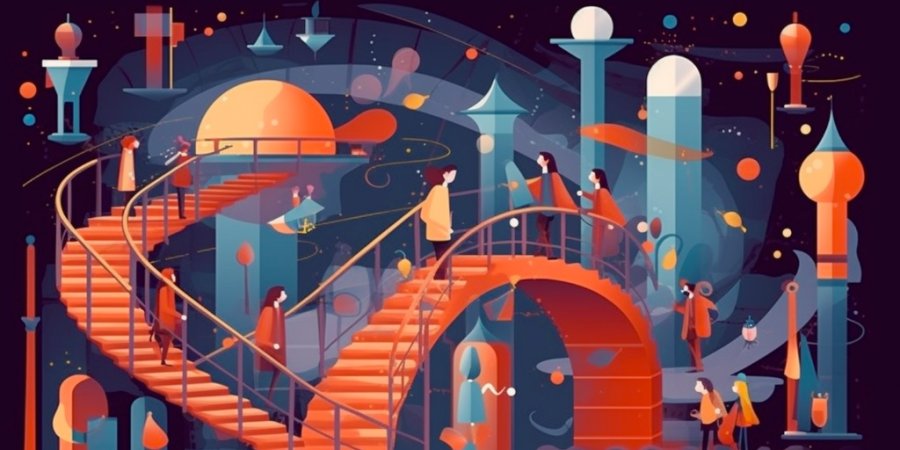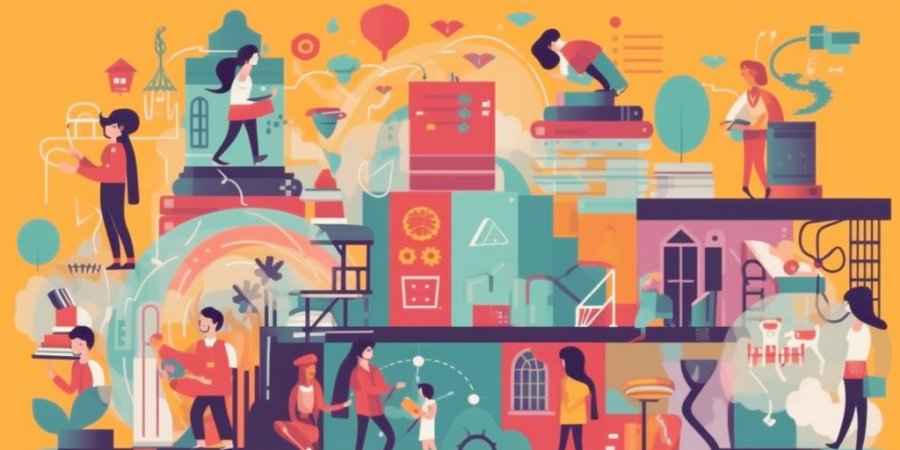ChatGPT in Education: A Game-Changer or a Threat?

ChatGPT is a powerful artificial intelligence (AI) chatbot that can generate text in a conversational style based on a given input. It was developed by OpenAI, a research organization dedicated to creating and ensuring the safe and beneficial use of AI. ChatGPT can produce remarkably clear, long-form answers to complex questions, as well as generate creative content such as stories, poems, and jokes. It can also mimic the writing style of famous authors, celebrities, or even the user themselves.
But what does ChatGPT mean for education? How can it be used to enhance learning and teaching? And what are the potential risks and challenges that it poses for academic integrity and quality? These are some of the questions that educators, researchers, and policymakers are grappling with as ChatGPT becomes more accessible and widely adopted.
Opportunities for Education
ChatGPT offers many opportunities for education, both for students and teachers. Some of the possible benefits are:
Personalized learning:
ChatGPT can provide students with personalized, real-time responses to their questions and needs. It can also adapt to their level, interests, and goals, and offer feedback, guidance, and encouragement. For example, ChatGPT can help students with homework, revision, or test preparation by generating practice questions, explanations, hints, or solutions. It can also act as a tutor, mentor, or coach, providing individualized instruction and support.
Enhanced creativity:
ChatGPT can stimulate students’ creativity by generating novel ideas, scenarios, or perspectives. It can also help them improve their writing skills by suggesting alternative ways of expressing their thoughts, correcting grammatical errors, or enhancing their vocabulary. For example, ChatGPT can help students write essays, stories, poems, or speeches by providing prompts, outlines, examples, or revisions. It can also help them brainstorm topics, arguments, or evidence for their assignments.
Engaging learning:
ChatGPT can make learning more engaging and fun by creating interactive and immersive experiences. It can also foster students’ curiosity and motivation by providing them with challenging and rewarding tasks. For example, ChatGPT can create educational games, simulations, or scenarios that require students to apply their knowledge and skills in realistic contexts. It can also create quizzes, puzzles, or riddles that test students’ understanding and reasoning.
Reduced workload:
ChatGPT can help teachers reduce their workload by automating some of their tasks. It can also help them improve their efficiency and effectiveness by providing them with useful tools and resources. For example, ChatGPT can help teachers create lesson plans, activities, or assessments that are aligned with learning objectives and curricular standards. It can also help them grade assignments, provide feedback, or monitor student progress. ChatGPT can also help different industries. For example, by learning useful ChatGPT prompts for lawyers, a law firm can increase their productivity. Similarly, with good tools such as a Midjourney prompt generator, a design form can create better works.
Challenges for Education

ChatGPT also poses some challenges for education, both for students and teachers. Some of the possible drawbacks are:
Academic dishonesty:
ChatGPT can enable students to cheat or plagiarize by generating text that is not their own work. It can also make it harder for teachers to detect cheating or plagiarism by producing text that is indistinguishable from human writing. For example, ChatGPT can help students write essays or coursework that will pass exams or assessments without doing any research or thinking. It can also help them copy or paraphrase text from other sources without proper citation.
Quality assurance:
ChatGPT can compromise the quality of education by generating text that is inaccurate, incomplete, or irrelevant. It can also mislead students or teachers by providing them with false or misleading information. For example, ChatGPT can generate text that contains factual errors, logical fallacies, or biased opinions. It can also generate text that does not address the question or topic adequately or appropriately.
Ethical concerns:
ChatGPT can raise ethical concerns by generating text that is harmful, offensive, or inappropriate. It can also violate privacy or intellectual property rights by using data that is not authorized or consented. For example, ChatGPT can generate text that contains hate speech, profanity, or personal attacks. It can also generate text that uses personal data, confidential information, or copyrighted material without permission.
Possibilities for Education
ChatGPT is neither a friend nor a foe for education; it is a tool that can be used for good or evil depending on how it is used and regulated. Therefore, educators need to move beyond the binary debate of banning or embracing ChatGPT; they need to adopt a more nuanced and critical perspective on its opportunities, challenges, and possibilities. Some of the actions that educators can take are:
Educate themselves:
Educators need to educate themselves about ChatGPT: what it is, how it works, and what it can and cannot do. They also need to keep up with the latest developments and research on ChatGPT and its implications for education. For example, educators can read articles, blogs, or reports that explain ChatGPT and its features, benefits, and limitations. They can also attend webinars, workshops, or courses that demonstrate ChatGPT and its applications in education.
Educate their students:
Educators need to educate their students about ChatGPT: how to use it ethically and productively. They also need to teach them the skills and competencies that are essential for the 21st century, such as critical thinking, creativity, communication, and collaboration. For example, educators can design learning activities that involve ChatGPT as a tool to enhance learning outcomes, not to replace them. They can also create learning environments that foster academic integrity, digital citizenship, and social responsibility.
Engage with stakeholders:
Educators need to engage with other stakeholders in education: parents, administrators, policymakers, researchers, and industry partners. They also need to advocate for the responsible and beneficial use of ChatGPT in education. For example, educators can share their experiences, insights, and best practices with ChatGPT with their colleagues and peers. They can also participate in discussions, consultations, or initiatives that aim to develop ethical standards, guidelines, or policies for ChatGPT in education.
Conclusion:
ChatGPT is a game-changer for education; it has the potential to transform how we learn and teach. But it is also a threat for education; it has the potential to undermine how we learn and teach. The future of education depends on how we use ChatGPT: as a tool to empower or exploit; as a tool to enrich or endanger; as a tool to create or destroy.
Previous Posts:
Next Posts: